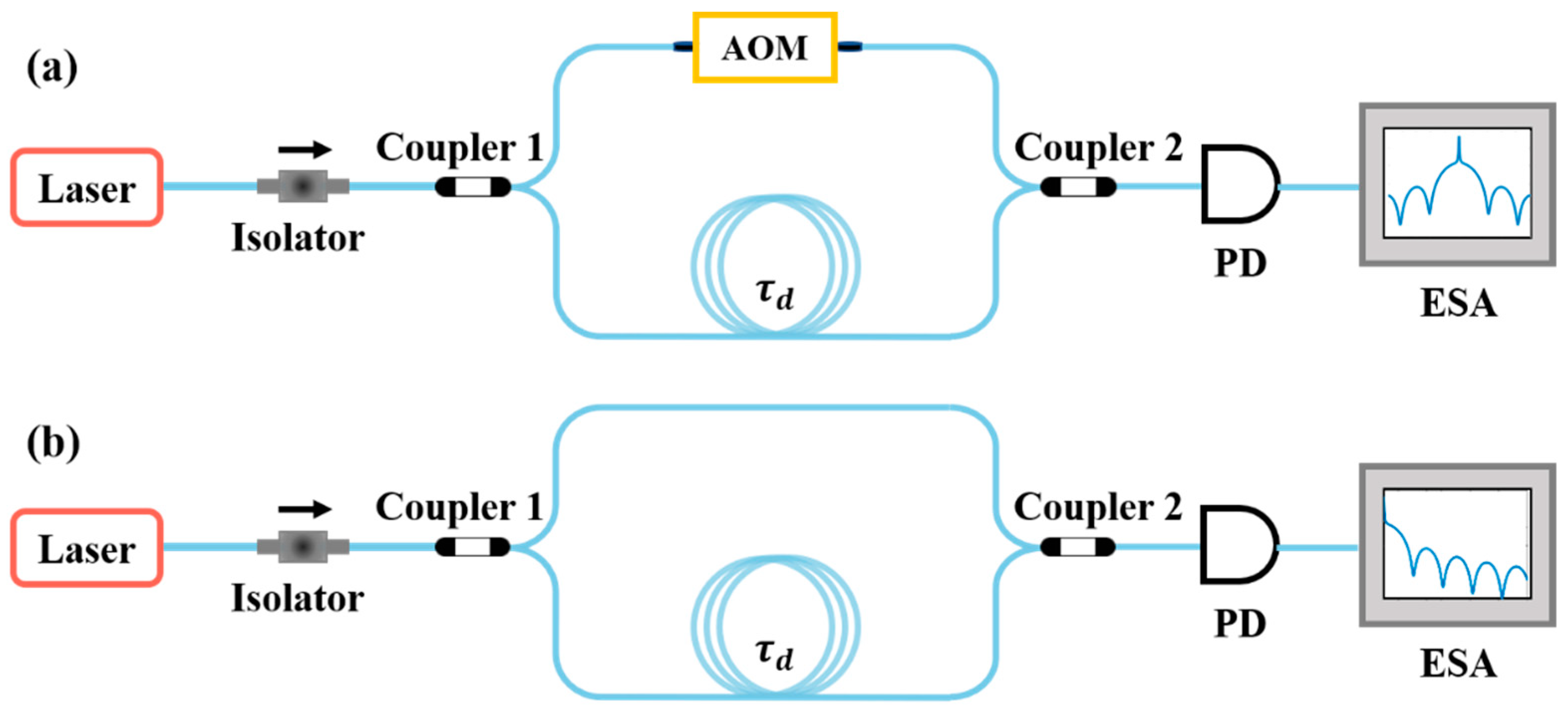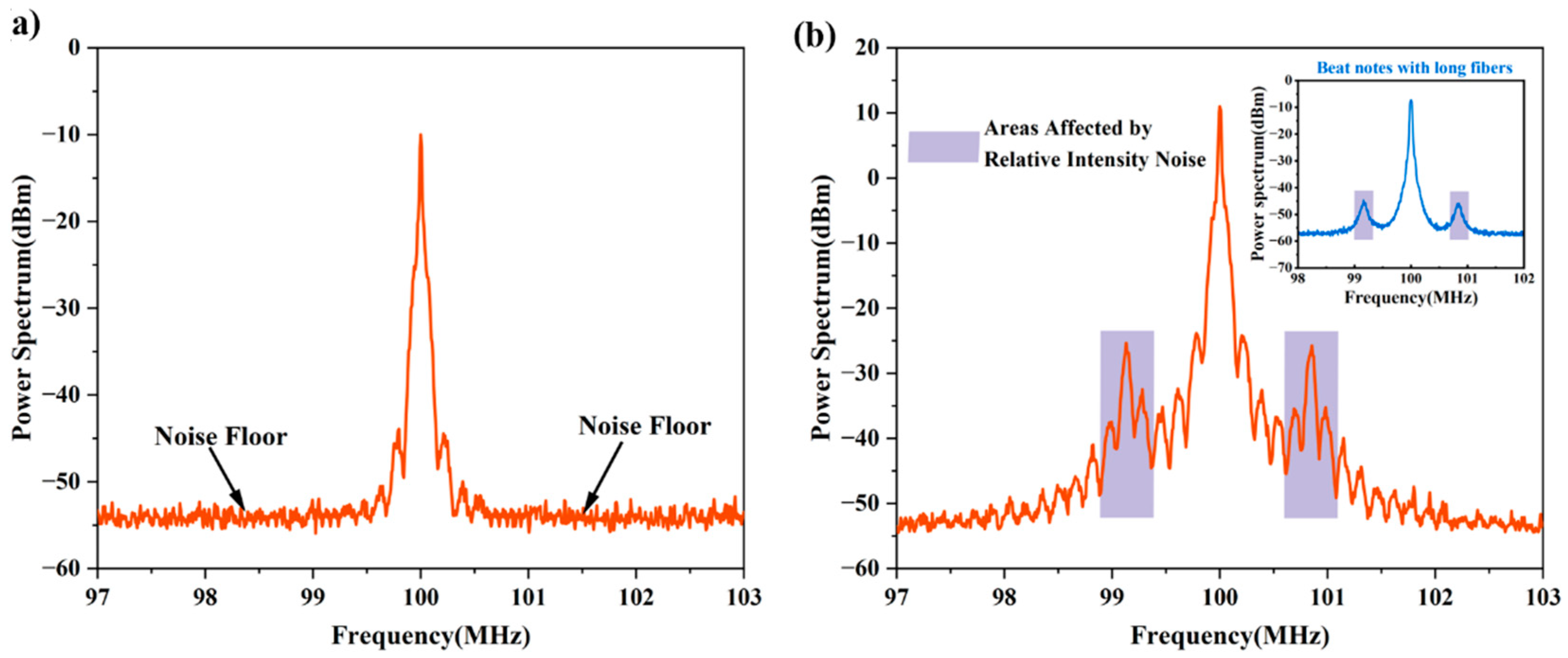Contents

Source: MDPI
Understanding the Self-Heterodyne Method for Laser Linewidth Measurement
In the field of photonics, accurately measuring the linewidth of lasers, particularly single-frequency lasers, is crucial. One effective technique for this purpose is the self-heterodyne method. This method provides a way to determine the width of the optical spectrum of a laser, which is essential for various scientific and industrial applications.
Principles of the Self-Heterodyne Method
The self-heterodyne method is a heterodyne technique that involves splitting a laser beam into two parts. One part of the beam is directed through a long optical fiber, introducing a time delay. The other part is shifted in frequency using an acousto-optic modulator (AOM), which typically operates at tens of megahertz. These two beams are then combined using a beam splitter, and the resulting beat note is detected with a photodetector, usually a photodiode. From this signal, the linewidth of the laser can be calculated.
Importance of Time Delay
The length of the optical fiber used for delaying one part of the beam is critical. For the beams to be considered uncorrelated, the delay must be longer than the coherence length of the laser. The coherence length is inversely related to the linewidth; hence, it is derived from the linewidth itself. This condition ensures that the output spectrum is a self-convolution of the laser’s output spectrum, allowing for accurate linewidth measurement.
Challenges with Noise
While the self-heterodyne method is effective, it is sensitive to noise, particularly low-frequency noise, which can affect the accuracy of linewidth measurements. Lasers with narrow linewidths, such as fiber lasers, can exhibit significant low-frequency noise, potentially leading to incorrect measurements. To mitigate this, it is essential to understand the noise characteristics of the laser being measured.
Practical Considerations
For lasers with very narrow linewidths, achieving the necessary time delay for uncorrelated beams may be impractical. In such cases, shorter delays can be used, but this requires more sophisticated data processing techniques. Alternatively, extensions of the self-heterodyne method, such as using recirculating fiber loops, can be employed to improve measurement accuracy.
Applications and Advancements
The self-heterodyne method is widely used in research and industry for characterizing lasers. Advances in this technique continue to enhance its precision and applicability. Understanding the limitations and capabilities of this method is essential for researchers and engineers working with laser technologies.
Conclusion
The self-heterodyne method is a valuable tool for measuring laser linewidths, providing insights into the performance and stability of laser systems. By considering factors such as time delay and noise, this technique can deliver precise measurements crucial for various applications in photonics.


Source: MDPI
Feel free to comment your thoughts.



